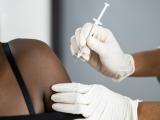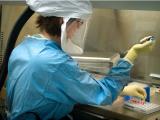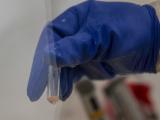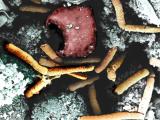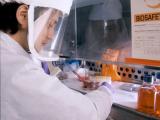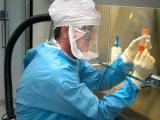Jan 7, 2002 (CIDRAP News) – A new nuclear medicine technique using a radioisotope-labeled antibody has shown enough promise for early diagnosis of anthrax infection to gain the Food and Drug Administration's approval for a clinical trial, according to a recent report in the Journal of Nuclear Medicine.
Researchers at Walter Reed Army Medical Center won approval in November to use LeuTech, a monoclonal antibody labeled with technetium Tc 99m, to look for infection in people who may have been exposed to anthrax, according to the report in the "Newsline" department of JNM's December issue. LeuTech, made by Palatin Technologies, Inc., Princeton, N.J., was recommended by an FDA committee in July 2000 for use in diagnosing appendicitis but has not yet received FDA approval.
LeuTech binds "with high affinity and specificity to a carbohydrate antigen, CD-15, on polymorphonuclear leukocytes in vivo," according to the report. That ability makes it useful for detecting infections deep in the body, such as appendicitis, osteomyelitis, and bowel and postsurgical infections.
Robert Bridwell, MD, a Walter Reed nuclear medicine specialist quoted in the JNM report, said he and his colleagues began working on an anthrax-diagnosis protocol for LeuTech in October. The FDA granted an investigational new drug (IND) approval for the protocol in early November, and his groups was ready to begin using the technique the second week of November, he said. However, no patients have yet been enrolled in the trial, because there have been no major anthrax-exposure episodes since the trial was approved, Dennis Earle, clinical affairs director for Palatin Technologies, told CIDRAP News.
In the JNM report, Bridwell said the hope is that LeuTech will be able to reveal an anthrax infection in its earliest stage, before mediastinal widening on computed tomography or other signs would appear. He also suggested that the method could be useful for preventing unnecessary use of antibiotics in people worried about anthrax exposure.
Inhalational anthrax is said to be nearly always fatal if left untreated. The fatality rate for anthrax in the past has been about 85%, according to Centers for Disease Control and Prevention Figures. However, 6 of 11 people who contracted the disease in last fall's episodes survived, a fact that was attributed to early recognition and aggressive antibiotic treatment.
Bridwell said the LeuTech technique is fast and relatively easy to use. It involves mixing a technetium solution with lyophilized monoclonal antibody and then waiting 30 minutes before injecting it into the patient. Imaging is done with a gamma camera or single-photon-emission computed tomography (SPECT).
The FDA's Medical Imaging Drugs Advisory Committee unanimously determined in July 2000 that LeuTech is safe and effective for diagnosing appendicitis. The technique showed 91% sensitivity and 86% specificity and had a negative predictive value of 96%, according to a press release from Mallinckrodt, a St. Louis company that will market and distribute LeuTech in under an agreement with Palatin.
Earle told CIDRAP News that Palatin is currently working on manafuacturing concerns raised by the FDA. "There were some manufacturing issues that need to be addressed, and they're fairly significant in scope, so our product development and manufacturing teams are working on those," he said. He said the company expects to get FDA approval of LeuTech for diagnosis of appendicitis in mid to late 2003.
See also:
Mallinckrodt press release regarding FDA committee action
http://www.prnewswire.com/news-releases/fda-advisory-committee-finds-palatin-technologies-leutechr-infection-imaging-agent-safe-and-effective-in-unanimous-votes-72283492.html
